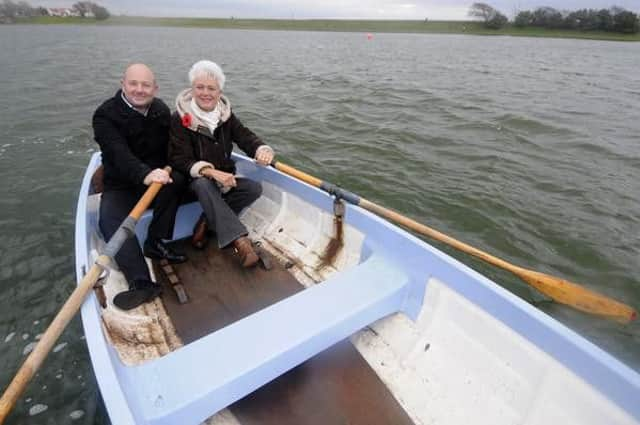Lake in bid for heritage bonanza


Fylde Council has submitted an application to Historic England in the hope that Fairhaven Lake and its parkland can be placed on the national register of historic parks and gardens.
If successful, Fairhaven Lake would be recognised as being of nationwide significance for its heritage value.
Advertisement
Hide AdAdvertisement
Hide AdThe 18-hectare leisure spot, which opened in 1893, is believed to be the first privately developed marine park in Britain.
Paul Drinnan, Fylde Council’s regeneration manager, said: “The lake and gardens is of major significance to the area and, indeed, the whole North West.
“For more than a century it has been a major attraction to residents and visitors and we believe it should be listed for its social and economic importance.”
Town hall leisure chiefs are currently awaiting the outcome of a Heritage Lottery Fund (HLF) bid to work on detailed costings of a larger £2m project to further develop the lake and gardens.
Advertisement
Hide AdAdvertisement
Hide AdIt is hoped that a successful listing will increase the chances of Fairhaven Lake landing the £2m of lottery money.
The money would help revamp the ageing tourist attraction and restore it to its former glory, when thousands of people used to watch events.
Susan Fazackerley, leader of Fylde Council, said: “I know there has been a lot of great research carried out with lots of interesting discoveries made about Fairhaven Lake.
“If successful, it will add a different dimension to the lake, a lot of people already come to Lytham and St Annes for a holiday but this bid can hopefully attract some different tourists who are keen on historic lakes and parks.”
Advertisement
Hide AdAdvertisement
Hide AdIn 2008, an earlier bid made by a member of the public was rejected as it was deemed the site did not have sufficient merit for national recognition, based on the known information at the time.
But now with the help of volunteer research groups who have uncovered hidden secrets about the lake, there is renewed hope about a successful application.
The groups findings reveal how the lake was originally funded by businessman Thomas Riley after he recognised the area’s potential for visitors and homes for the wealthy.
Research has also discovered that the lake and gardens were taken over by Lytham St Annes Corporation with the £34,000 purchase cost being met by Lord Ashton, a linoleum manufacturer.
Advertisement
Hide AdAdvertisement
Hide AdLord Ashton was a major benefactor to St Annes and was well-known due to his connection with Ashton Gardens.
Fylde Council now plan to improve facilities for sailing and rowing, new shelters, new lighting features, footpath widening and restoration of the Japanese Garden.
Elaine Taylor, of Lancashire Gardens’ Trust, said: “Lancashire Gardens Trust enthusiastically supports having Fairhaven Lake included on the English Heritage Register of Historic Parks and Gardens.
“It has evident significance and has the potential to become once more a place of beauty.”
Advertisement
Hide AdAdvertisement
Hide AdJanet Turner, part of LSACA research group, said: “We spent several months researching the history of Fairhaven Lake & Gardens from the original records of the Fairhaven Estate Company, Lytham St Annes Corporation and the LSA Express.
“The more we learnt, the more we became convinced that Fairhaven Lake should be recognised as a unique asset to the Fylde Coast, and indeed to the country as a whole.
“Just as significant as the early history of the Lake, is the later involvement of Prentice Mawson (of Thomas Mawson & Son) in extending and redesigning the lake to its present form.
“Virtually all of Mr Mawson’s plans for the Lake and Gardens as far as St Paul’s Avenue were turned into reality, and the Lake today remains effectively Prentice Mawson’s re-design.”